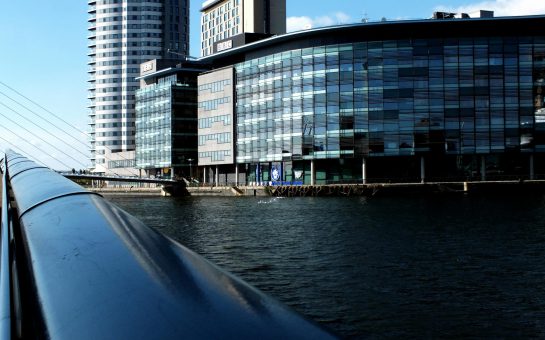The fashion scene is changing. Anyone with social media will be seeing a move towards sustainability and second hand, as fast fashion is killing our planet.
Despite this, the tyrant of cheap garments rages on despite many of the big names that we loved causing more trouble than good.
It was reported at the beginning of lockdown, that ASOS had come under fire for forcing staff to work in an overcrowded warehouse to deal with the huge numbers of orders they had received.
Meanwhile, charities, including Lost Stock, had to buy the stock shipments from companies like Topshop and River Island because the high street retailers had cancelled $2billion worth of stock, as reported by Glamour Magazine.
This meant that those working in retail factories would not receive pay for their work.
Issues like these showcase the huge divide in the retail world between the buyer and the maker.
As a buyer, you see something you like online, you’re living on a budget and the item is only £7! Bargain! But do you ever stop to think about why the garment is that cheap?
More recently, In the Style released NHS t-shirts, all profits to charity, but now on sale with 50% off as the fad of helping the NHS became passé. But who made these t-shirts, how quickly, and in what conditions, did they have to work in order to create them?
Boohoo, like many brands do in June, released a special collection of clothing for Pride. From their website, however, there is no mention of whether the funds raised help those in need in the LGBT+ community.
Other shops, such as Levis and Topshop also released Pride collections, but were upfront about the profits of these items and how they were supporting LGBTQIA+ communities.
These examples of virtue signalling give the buyer the thought that they are part of a movement: helping. But, instead, their money just goes to the profit pot of the company.
These clothes are not expected to be worn many times. Their life expectancy is the month of Pride, or for a two minute clap on your doorstep.
For the makers, of whom 80% are women of colour, this clothing is their job, their income. If a top costs £7, the maker will see pennies.
There are regulations in place to ensure wages for those working in the retail industry, but through subcontracting down the supply chain, responsibility is lost.
Meanwhile, many people don’t consider where their clothes come from or where their money goes. Rebecca Hughes, however does, she runs a blog on Instagram, @theniftythrifter_, devoted to sustainable fashion, and saying goodbye to fast fashion.
She told Mancunian Matters: “I would like to see brands sharing the exact locations of their factories around the world as well as insight into the outcome of the inspections of these factories.
“We should be able to find these documents online so to be assured garment workers are being paid fairly and in safe conditions.
“Pressure to get the lowest priced products often drives poor work conditions. There needs to be impactful change regarding how much brands expect certain products to be made for.”
She suggests that by buying from these big brands you are “Enabl[ing] that company to continue mass producing clothing at an unsustainable rate, often paying workers less than a minimum wage.”
Rebecca suggests researching the brand, trying to find out if they are promisingly ethical or not.
She added: “Check their ‘about us’ section. If they are genuine and sincere about their dedication to ethical and sustainable practice it will usually be pretty obvious to assess.”
Many brands have charity partners, and through them they show how they are helping others and where their clothing comes from.
Primark, under fire for years for use of inappropriate labour, now boasts how it supports its workers with 42 listed partnerships on the companies website, many of which support fair labour and safe working conditions. Unlike other high street brands, Primark did not cancel springtime orders, despite not having an online sales website.
However, like many other high street names Primark does not own its factories and therefore does not have control over its supply chain.
Issues like this can be deceiving, but many brands are upfront about their ethical and sustainable decisions. Brands such as Lucy and Yak, or Cow Vintage.
If you’re unsure, there’s an app for that! Good on You gives you articles and guides on all things ethical and sustainable whilst offering reviews and ratings of brands.
There is always the choice to shop secondhand, using sites such as Depop, Vinted, or eBay. However, fast fashion is a huge part of our economy, and many high street names are making changes to be less disposable. H&M and Zara, whilst still not perfect, have made strides towards ending the cycle of fast fashion, with H&M creating a conscious collection.
There is no right way to shop, but there are choices that can be made to shop a little more ethically.
Perhaps, if you’re only going to wear the dress once, buy it on Depop.
But if you have to have the coat, Topshop is your friend.
Main image courtesy of Sundry Photography via Shutterstock, with thanks.



